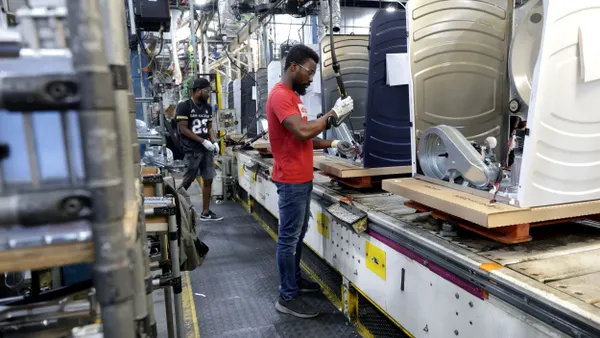Dive Brief:
- American businesses face increasing challenges when recruiting STEM (science, technology, engineering, and math) and IT professionals, according a new national survey.
- The survey from the American Competitiveness Alliance highlights issues such as scarcity of talent, climbing administrative and regulatory costs, and constricting wage pressures.
- The survey of 400 hiring managers and executives – conducted for the ACA by the Benenson Strategy Group – found that 8 in 10 report their company is investing more in STEM recruiting as a result of IT hiring challenges; 82% report hiring a skilled foreign worker costs as much or more than hiring a U.S. worker; and 3 in 4 professionals say the costs associated with sponsoring and complying with the H-1B visa program are already too high for most American companies.
Dive Insight:
As a result of this scarcity, wages have steadily increased for high-paying, in-demand positions in STEM fields, with three in four executives reporting higher salaries for their STEM workers than in the previous five years. Also, many of these jobs go unfilled for weeks or even months due to the limited pool of qualified candidates and increasing costs associated with recruitment and retention of skilled employees.
Matthew Slaughter, Dean of the Tuck School of Business at Dartmouth and academic advisor for the ACA, said the report's findings demonstrate that it will take a multi-faceted approach in closing America's skills gap. "While a robust investment in STEM education will help our economy in the long-run, we clearly need policies from Washington that support growth, not slow it," he says.
In fact, A 2013 Georgetown University Center on Education and the Workforce report found that the U.S. is on track to face a shortage of five million workers by the end of this decade, with nearly 80% of those positions requiring various levels of advanced education. The talent wars are not imaginary.












